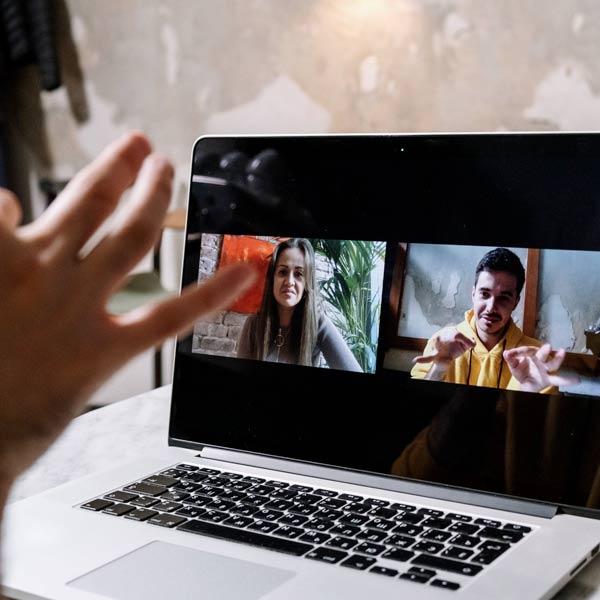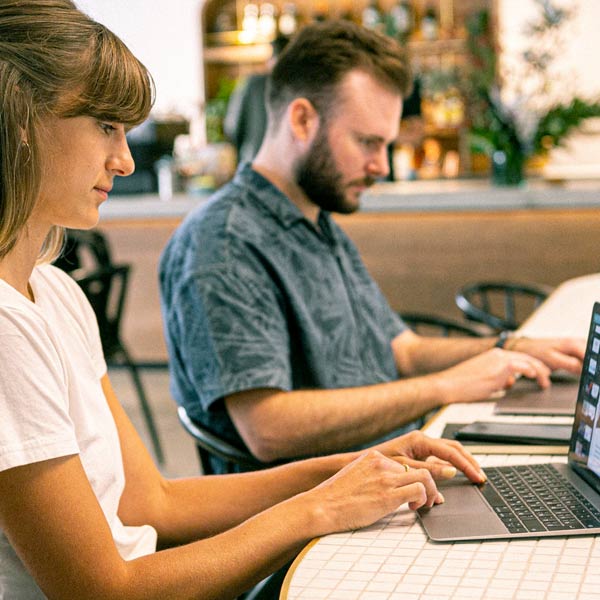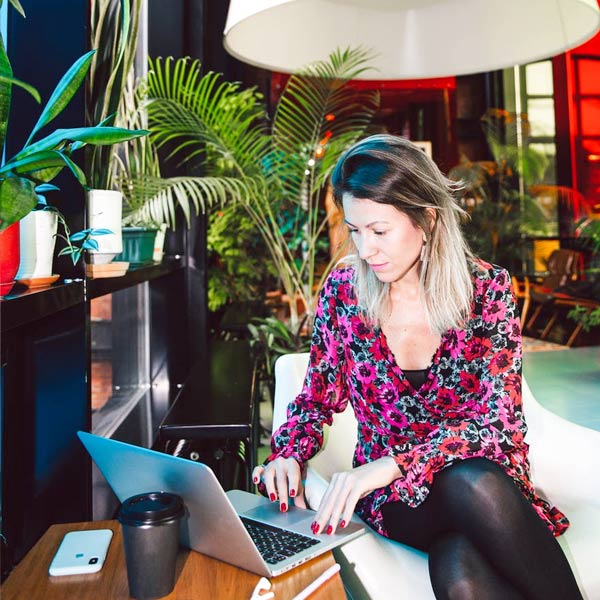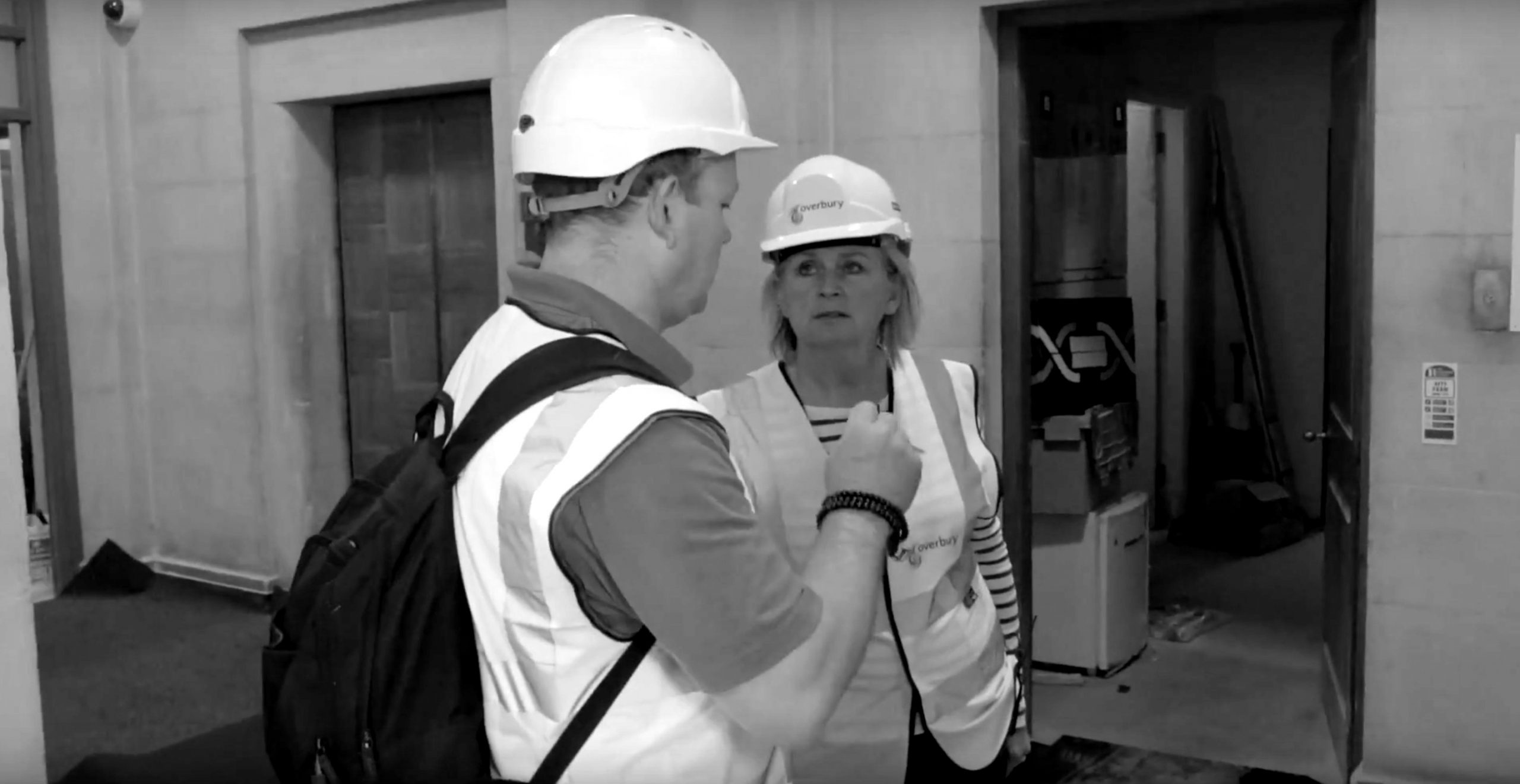— The PLACEmaking blog
COVID-19's impact on the workplace and technology
Author
Alison WhiteDate
July 9, 2021A detailed look at the impact the pandemic will have on commercial real estate and workplace technology.
01
How is technology (hardware and software) facilitating the rise of hybrid working — both in terms of remote and office working?
There is of course the obvious hardware technology change that supports hybrid working and that’s the shift from fixed desktop computers to mobile laptop-type solutions. We all know that mobile technology facilitates choice of when and where to work so is a key enabler for hybrid working.
But it does more. It facilitates our ability to use software as a key innovation tool for when we do choose to physically work together. Unlocked from a desk, we can collaborate better: we can share and use software tools that facilitate us to stimulate debate and discussion, share ideas and experiences, digitally editing and saving collectively created outputs.
Beyond that there are two specific technology related contributors to properly facilitating hybrid working.
One is having remote access to digitally stored and valuable information from any remote location. What underpins this is of course a cultural commitment to digitally create and store relevant information (not just a digital alternative to paper filing in cabinets) but also the transformation of attitudes (organisationally and personally) from defensive ‘ownership’ to open ‘sharing’ of knowledge.
The other is the integration of communications and computing (pre-COVID we talked a lot about ‘computing’ but not so much about communications). Now communications is top of the agenda and the past focus on ‘voice’ has been superseded by video connection.

02

What technological advancements, in particular, have been fast-tracked as a result of the pandemic?
During the early phase of the pandemic-enforced lockdowns, we saw a significant increase in demand for on-screen ‘meeting’ software and a spike in related skills on-boarding from across generation groups including people who had previously shown reluctance in expanding their technology abilities.
As having a ‘meeting’ online became the daily norm, the purpose and function of a meeting as an event started to be questioned and a desire to use time more effectively, reduce passive attendance, encourage greater collaboration, focus on solving problems and creatively work as a team has led to broader interest in a new generation of software solutions. The changing customer ‘profile’ and direct relationship between the software and the end user has changed the software functionality, demanded more intuitive access and resulted in a change in the language used in the navigations tools – away from exclusive language assuming a tech expert was the consumer and towards commonly shared language suitable for the actual consumer often working from home.
03
What trends were already coming to the fore prior to the pandemic?
The traditional role of ‘the office’ was already eroding. The enclosing walls of the office building could no longer contain corporate knowledge and control human resources. Younger generations were already rejecting the symbols of success of their parents’ generation: daily commuting to the city centre office, the classic symbols of glass, steel and concrete office buildings, rigid dress codes and the pre defined, employer-imposed career progression ladders. With little chance of securing a mortgage, they were better placed to take career risks and more focused on the balance of work and their desired lifestyle. They wanted local, they wanted to be part of their community and they wanted a place that had fewer rules, no hierarchy and they were prepared to share opportunities, resources and possessions.
Older generations recognised the fundamental changes in their own employment trajectory when they witnessed the ‘ruthless’ results of the 2008-09 crash. They realised spending their day in an office with others of the same profile and isolated from the pace of energised change occurring outside the business districts was contributing to their own redundancy.
Intelligent organisations recognised they needed to connect these generations better – enabling their execs to operate from shared co-working hubs and transforming their city centre offices from inward looking office factories to places for collaboration: open and welcoming in their customers, their suppliers and even their competitors to make use of outward facing collaborative spaces. Maximising the opportunities of energies and fresh ideas with the experience of taking forward an idea in to a solution and out into the market quickly, effectively and profitably is now the focus of this conjoined cross generational effort.

04

With a particular focus on technological developments, what changes will we see to the way workspaces are designed and laid out to accommodate hybrid working?
Greater integration of AI as an assistance to the decisions we make and the way we maximise use of our time. Hybrid working does not mean we continue with the instruction to work exclusively from home. We want and need to spend time with other people. What hybrid working means is that we have greater levels of choice over when, where and how we work.
So when we do choose to travel to a place, we want to make sure we get the best value out of that time and effort. So the design of the workplace has to change completely (we need to be rewarded for the effort of getting there so when we physically or virtually walk through the door we have to think WOW!) and building systems need to intelligently assist us achieve our task, asking us what outcomes we want and offering us space and technology options and solutions that can best achieve that and helping us assemble the best skills available.
05
In general, how does the workplace of the near future differ from traditional offices?
100% different. The days of daily commuting to a city just to sit at a computer all day is gone. We want to balance time working from home with time dipping in to and out of a local hub within walking or cycling distance and planned time in centralised centres of excellence. That hub needs to part of be an interconnected network, part of a system for creative interaction, forget the isolated ‘back office’ of the past.
We’re happy to share our local hub with others and take responsibility for our own decision making on what makes us comfortable, effective and productive. We want to be part of a global digital community and be physically based in our local community, balancing time for work with time for our caring responsibilities and making time for other interests.
In terms of the central office workspace, that needs to be transformed in to a ‘centre of excellence’ that is at the heart of the connected network of hubs. That place need transformation – getting rid of all desks and investing in a richer mix of collaborative work settings: recognising that one size never did fit all and accept different personalities, different work-styles and different generations want different solutions. We need to move people from thinking they need to own space there to being consumers of better quality services and therefore the support services also need to be repurposed. Rigid rules on who sits where, who has or doesn’t have rights of access etc need to be replaced with a greater focus on facilitation and enablement in place of facilities management, giving are newly identified consumers more choice, more ability to rearrange, reconfigure and disrupt how space is arranged, technology used and services presented.

Subscribe to our mailing list
Let's Work Together
Office
Box 18, Boxworks
Clock Tower Yard,
Bristol BS1 6QH

